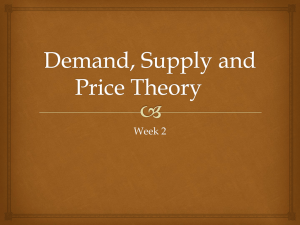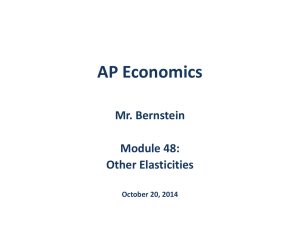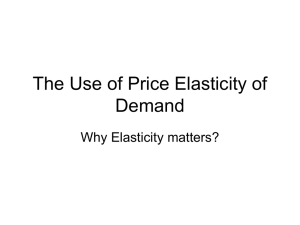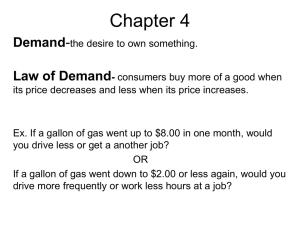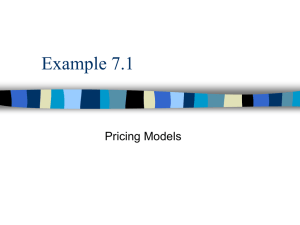Module 47 - Interpreting Price Elasticity of Demand
advertisement
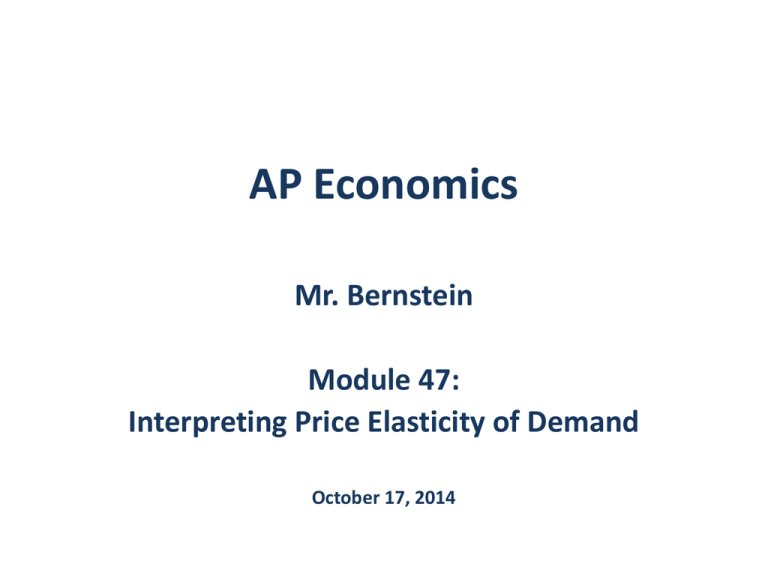
AP Economics Mr. Bernstein Module 47: Interpreting Price Elasticity of Demand October 17, 2014 AP Economics Mr. Bernstein What Does the Value of Elasticity Tell Us? • Example: Ed = %ΔQd/%ΔP = 10; P rises 1% • Algebra: %rQd/1% = 10, so %rQd = 10% fall in Qd • For a business, this is a dramatic fall in sales due to a small price increase • Elasticity describes the steepness of the demand curve • Elasticity of zero = “perfectly inelastic” – changes in prices have no impact on quantity demanded (vertical) • “Perfectly elastic” – changes in prices have infinitely large impact on quantity demanded (horizontal curve) 2 AP Economics Mr. Bernstein Examples of Perfectly Inelastic and Elastic Curves • xxxx 3 AP Economics Mr. Bernstein What Does the Value of Elasticity Tell Us? • In general terms: • Inelastic means a steep or steeper curve • Elastic means a flat or flatter curve 4 AP Economics Mr. Bernstein Elasticity and Total Revenue • TR = P x Q • Price effect: Raise P, R tends to rise • Quantity effect: Raise P, Qd falls, so R tends to fall 5 AP Economics Mr. Bernstein Elasticity along the Demand Curve • TR begins to fall as prices rise and Elasticity grows 6 AP Economics Mr. Bernstein Determinants of Elasticity • # of Substitutes • More substitutes, more elasticity • Luxury or Necessity • More necessary, less elasticity • Example: Insulin vs. Bicycles • Share of Income Spent • Larger percent of budget, more elasticity • AKA Expensive vs. Inexpensive • Time • More time involved, more elasticity 7 AP Economics Mr. Bernstein Determinants of Elasticity, cont. • Total Revenue (TR) Test • • • • If TR rises as P rises, demand is inelastic If TR falls as P falls, demand is inelastic If TR falls as P rises, demand is elastic If TR rises as P falls, demand is elastic • Elasticity Coefficient Test • If Elasticity >1, it is elastic • If Elasticity <1, it is inelastic 8



